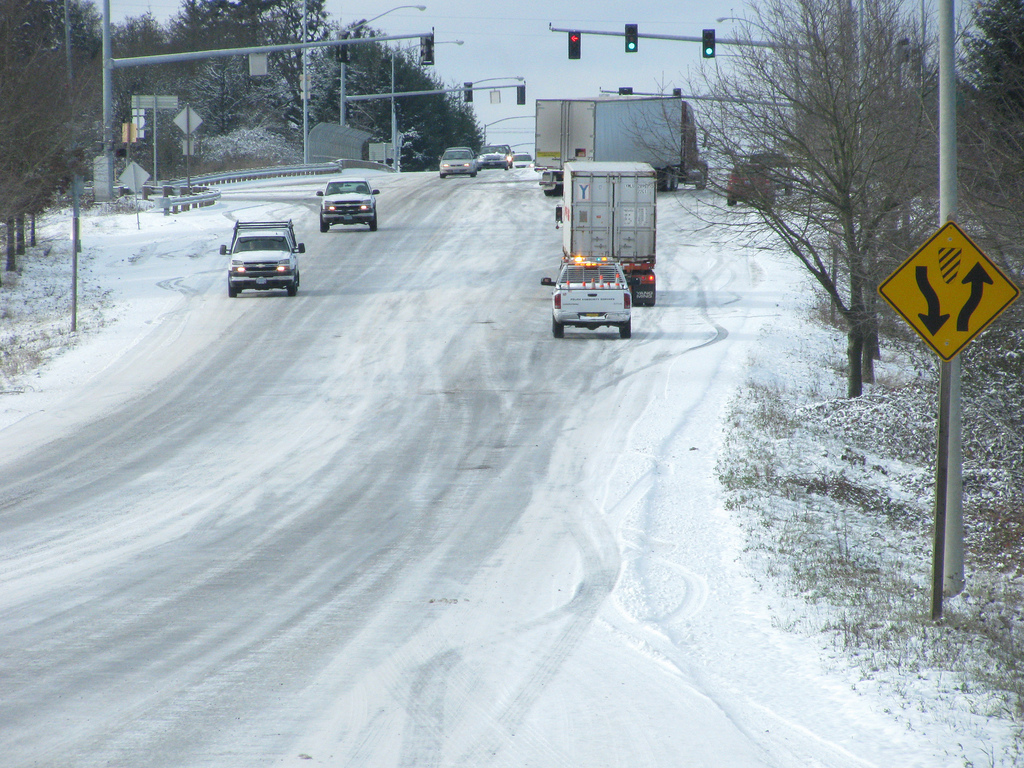While we always learn upon first getting a driver’s license how to handle icy roads, black ice is a whole other ballpark. Black ice, a thin, clear sheet of ice, looks like the road’s black asphalt, making it hard to see. It occurs after light sleet or snow freezes on the road or when ice or snow melts and then refreezes, creating wildly slick ice almost impossible to perceive with the naked eye.
Cars typically lose traction on black ice, and drivers lose control in no time. While it’s always safest to stay indoors when there’s black ice on the road, sometimes there’s no choice and you must drive somewhere. If this ever happens, drivers should always adhere to the following tips to ensure they’re driving as safely as they can even on black ice.
Avoiding Black Ice
The first thing drivers should always do is know where and when black ice will likely be—that way they can avoid the dangers of black ice altogether. Black ice typically occurs in the coldest of places, such as areas shaded by hills, overpasses, or trees. Overpasses are especially susceptible to black ice, given that cold air flows below and above the road.
This ice will also occur late in the evening or around dawn when the weather reaches its nadir, but it’s also less likely to happen on busy roads due to the heat generated by vehicles. Once drivers have an idea where black ice may happen, they are better able to stay away from it, especially given it often occurs in the same spots, leaving an easily predictable trend for where cars usually slide off the road.
For drivers trying to avoid black ice, watch for shiny areas on the tarmac—it may be hard to see, but you can occasionally find hints of it. If there is a shinier asphalt patch, slow the car down and try to avoid it because it might be black ice. As well, drivers need to watch cars around and in front of them. If one drives on black ice, the driver will most likely lose traction and slide slightly if only for a moment.
Driving Safely on Black Ice
If drivers find themselves on black ice, they need to first and foremost fight their instincts and not turn the wheel or hit the brakes once they’re on the ice. Drivers have basically no control over steering or braking on black ice. Slamming the brakes locks the tires up, making the car slide more, and turning the wheel just makes the car spin out of control fast, likely leaving the car facing backwards. Rather than do this, drivers need to keep their hands on their steering wheel firmly because the car will lose control for a moment, but it usually slides right back onto normal tarmac.
Drivers must immediately take their foot off their gas pedal, as this will only exacerbate sliding. Also, drivers shouldn’t let other vehicles tail behind them because this increases the chance of an accident should one of them lose control of their vehicle, and it encourages the driver up front to go faster than is safe. If a car starts tailing you, merge with another lane or pull over until it’s passed.
If drivers cannot regain control, the best possible thing left to do is limit the incoming damage. Once drivers know their car is going off road or turning sideways fully, they should tap their brakes until they begin getting traction back. If it’s possible, steer the car to the safest possible place, such as the roadside where there’s likely dirt, grass, or gravel. Don’t get out of the vehicle—call 911 or a tow instead because the next vehicle to hit the black ice could put your life in further danger if you’re out in the open.
Think you or someone you know is in need of Behind the Wheel Training? Training Wheels is an Atlantic City driving school specializing in teaching new teen drivers how to stay safe on the road. For more information on our lessons, please click here.

